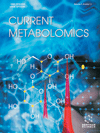- Home
- A-Z Publications
- Current Metabolomics
- Previous Issues
- Volume 4, Issue 1, 2016
Current Metabolomics - Volume 4, Issue 1, 2016
Volume 4, Issue 1, 2016
-
-
Systems and Synthetic Biology for the Microbial Production of Biofuels
More LessBy Amit GhoshBackground: Rising costs and a depleting supply of oil, as well as environmental concerns, have led to strong interest in renewable fuels and chemicals. In the last decade, there was considerable interest for microbial production of biofuels by metabolic engineering approach as an attractive alternative to transportation fuels. This review is aimed to provide details of different biosynthetic pathways for microbial prod Read More
-
-
-
Recent Strategies to Overexpress and Engineer Cellulases for Biomass Degradation
More LessBioenergy is one of the best options towards replacing fossil fuels with renewable, carbon-neutral alternatives. To generate bioenergy at an industrial scale, we must be able to design an optimized cell factory that will convert chemically complex residual biomass or lignocellulose to useful liquid fuels. Microorganisms have evolved a sophisticated enzymatic machinery to degrade these heterogeneous biomass substrates to Read More
-
-
-
Xylanase: Applications in Biofuel Production
More LessBy Sarika GargBackground: Xylanase (EC 3.2.1.8, endo-1,4-β-xylan 4-xylanohydrolase) is a naturally occurring enzyme that breaks down hemicellulose by converting β-1,4-xylan into xylooligosaccharides, xylobiose and xylose. It is frequently found in microbes and fungi. Considering the depleting resources of natural petroleum products especially petrol, current status of xylanase especially with respect to structural aspects and its Read More
-
-
-
Strain Engineering for Improved Bio-Fuel Production
More LessAuthors: Supriya Ratnaparkhe, Milind B. Ratnaparkhe, Arun Kumar Jaiswal and Anil KumarBackground: Biofuel research has gained considerable interest in the recent past since these are renewable fuels and are considered environment friendly unlike their conventional counterparts. Microbes play important roles in most aspects of biofuel production particularly hydrolysis of biomass, lipid production, fermentation of sugars and production of advanced biofuels. Methods: In the present review, we have discuss Read More
-
-
-
Designer Plants for Biofuels: A Review
More LessAuthors: Ajay Badhan and Tim McAllisterInjudicious over-consumption of fossil fuels over the last century has generated an imbalance in the carbon cycle, dramatically increasing atmospheric carbon dioxide and contributing to climate change. Much of the released carbon is ancient, accumulating in the earth’s crust in the form of oil, coal or methane gas over millions of years. In contrast, the carbon in biofuels has only recently been sequestered from the a Read More
-
-
-
Profiling of Extracellular Metabolites in CHO-K1 Cells Cultured in Medium with Different Levels of Serum and Glutamine
More LessBackground: Gas Chromatography Mass Spectrometry (GCMS)-based metabolomics has been shown to substantially contribute to understanding of the physiological state of mammalian producer cells leading to improved large-scale production of biopharmaceuticals. In this study, GCMSbased metabolomics (global metabolite analysis) approach was used to understand the effects of different levels of serum and glutamine on m Read More
-
-
-
Urinary Metabolite Profiles May be Predictive of Cognitive Performance under Conditions of Acute Sleep Deprivation
More LessContinuous and sustained actions in military and civilian operational environments typically lead to reduced sleep normally required to perform optimally. Because cognitive fatigue leading to defects in performance is an occupational hazard, there is a recognized need for real-time detection technologies that minimize cognitive fatigue-induced mishaps. Here, 23 individuals were subjected to 36 h of continuous wakefulness, an Read More
-
-
-
NMR Metabolomics: A Comparison of the Suitability of Various Commonly used National Health Service Blood Collection Tubes
More LessAuthors: Marie Margaret Phelan and Lu-Yun LianBlood plasma and serum are among the most common biofluids studied by metabolomics. The plethora of collection tubes available and variety of coatings on offer make it difficult to decide which collection tube offers the greatest reproducibility and least signal interference for metabolomics studies. We have acquired the NMR proton spectra of water washes of a range of monovettes available to the UK National Health Servic Read More
-
Most Read This Month
Article
content/journals/cmb
Journal
10
5
false
en


